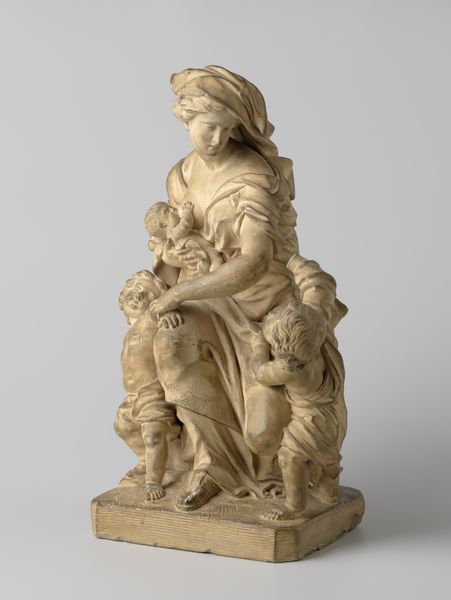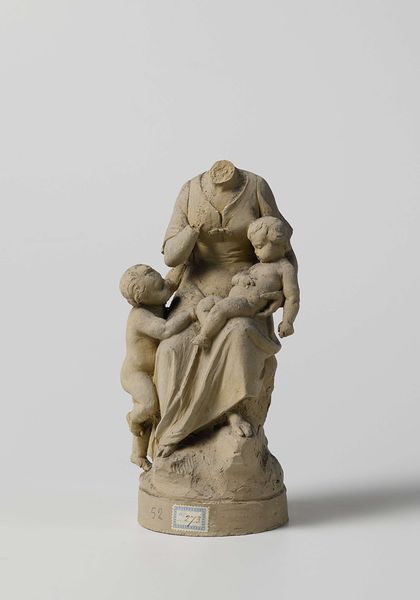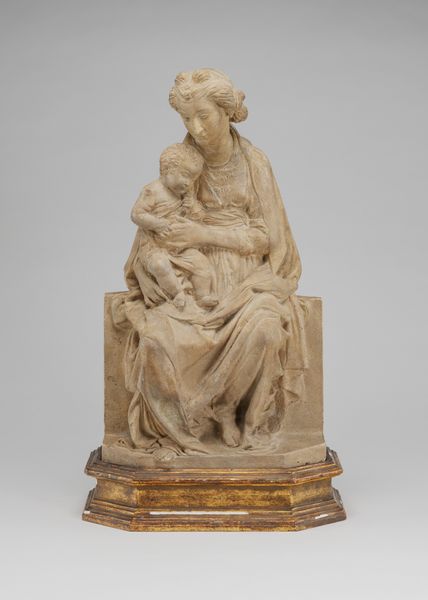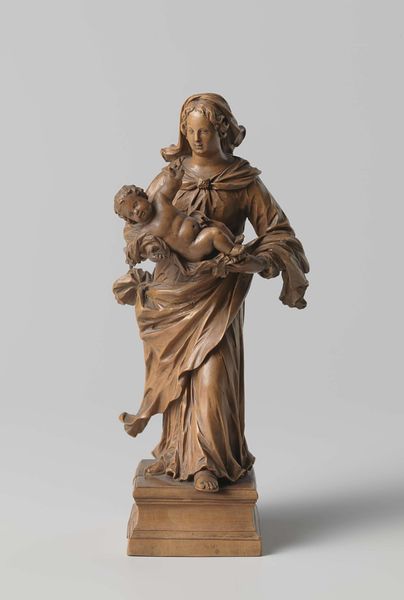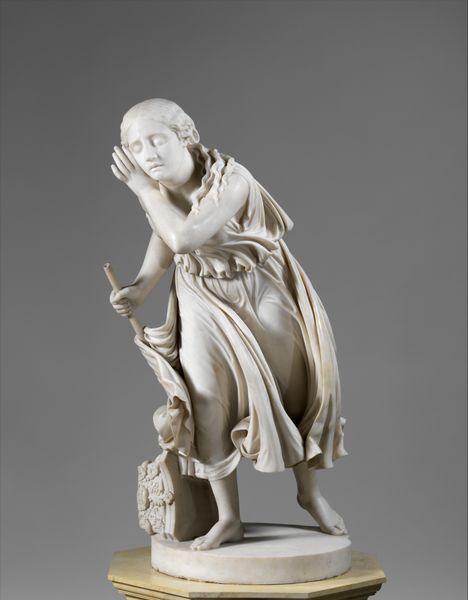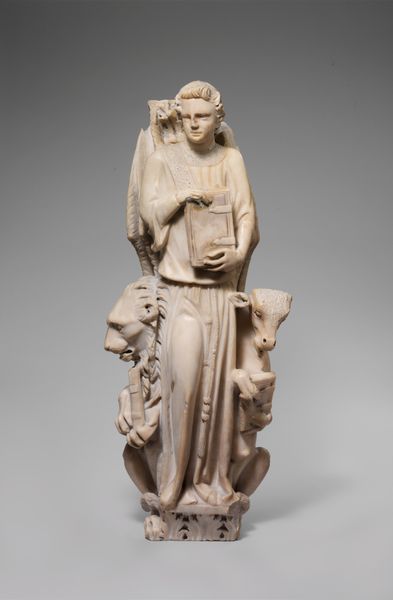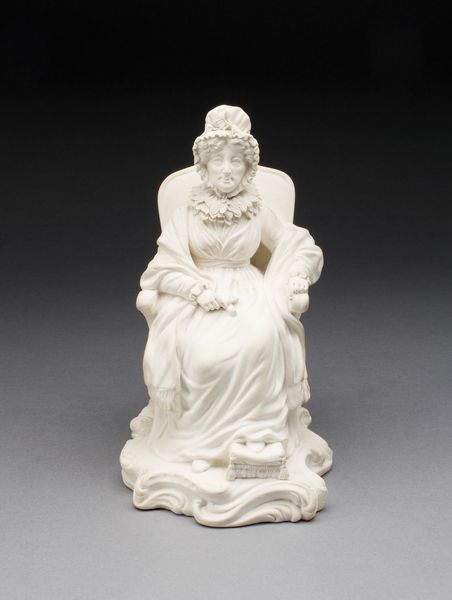
sculpture
#
baroque
#
sculpture
#
figuration
#
sculpting
#
sculpture
#
genre-painting
Dimensions: height 46 cm, width 33.5 cm, depth 26 cm
Copyright: Rijks Museum: Open Domain
Editor: This is "Two Laughing Jesters," a sculpture made in 1673 by Pieter Xaveri. The expressions are so… extreme. It’s hard to look away. What visual elements strike you first in this piece? Curator: The dynamism is captivating. Notice the interlocking forms and the implied spiral created by their embrace. The composition is masterful in its exploitation of positive and negative space. The exaggerated features, though humorous, are rendered with a technical precision that highlights Xaveri's sculptural skill. Consider the textural contrast: smooth surfaces defining the faces juxtaposed with the deep folds of their clothing. Editor: So, it's more about how it’s made than, say, what it means? Curator: Precisely. Observe the interplay of light and shadow. The high relief creates pronounced chiaroscuro, enhancing the sense of movement. It also helps direct the viewer's eye towards the facial expressions and the overlapping of bodies to add tension and depth. Note the diagonal line running from the head of one jester to the foot of the other, which contributes to the artwork’s dynamism. Editor: I see what you mean about the light now. And how the folds lead your eye around the work. But what about their emotions? Is that relevant from a formalist perspective? Curator: The emotion, though seemingly present, is primarily a result of formal elements—the curvature of the mouths, the squint of the eyes, all contribute to the effect of laughter, and these are formal qualities we can analyze, in terms of the line and shape. Do you notice the visual rhythm throughout the figures? Editor: That’s a fascinating perspective. I tend to focus on what the artist is trying to *say*, but seeing it as a structured composition opens a new way to appreciate it. Thank you! Curator: Indeed, examining its construction, rhythm and form allows a far deeper understanding.
Comments
No comments
Be the first to comment and join the conversation on the ultimate creative platform.

